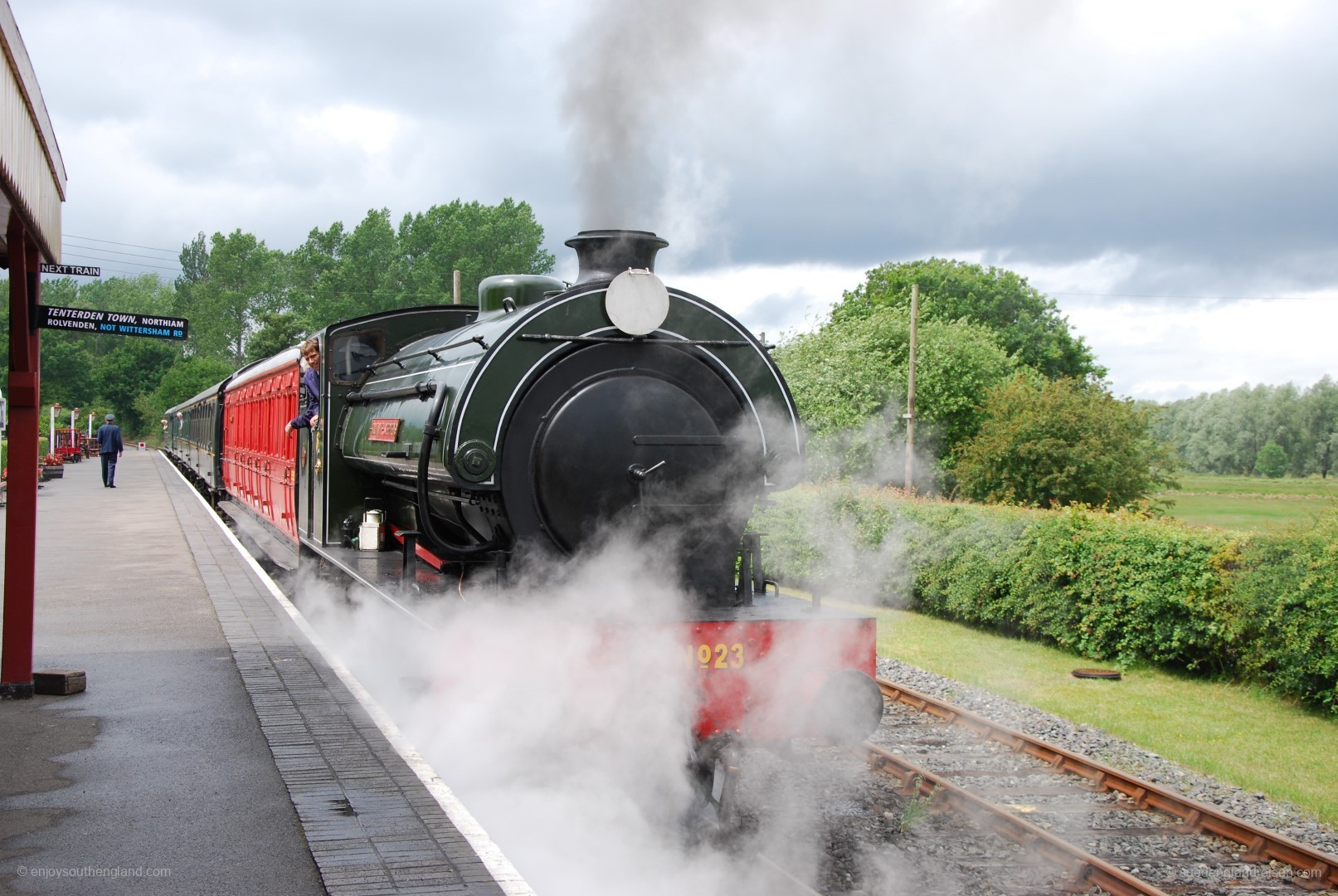
Kent & East Sussex Railway – Departure of the train from Bodiam
The “Weald” is a hill range in the south-east of England and on the map it can be seen just to the right of London. These regions in the counties of Kent and East Sussex are a strong commuter and catchment area to the British capital, but do not have the industrial character of other parts of south-east England. On the contrary, this countryside with rolling hills is quite touristic and enchants the visitor with its beautiful historical small towns, narrow streets and surprising views into a lovely green landscape.
Plans for a railway through this region were drawn up as early as 1850. However, a number of problems delayed this construction until the opening of the Rother Valley Railway on 2 April 1900. This largely followed the course of the narrow river Rother and connected the main line from London to Dover to the London to Brighton line between the stations of Robertsbridge and Headcorn. However, the line never developed any great importance. Passenger services had to be stopped as early as 1954, followed by freight traffic in 1961.
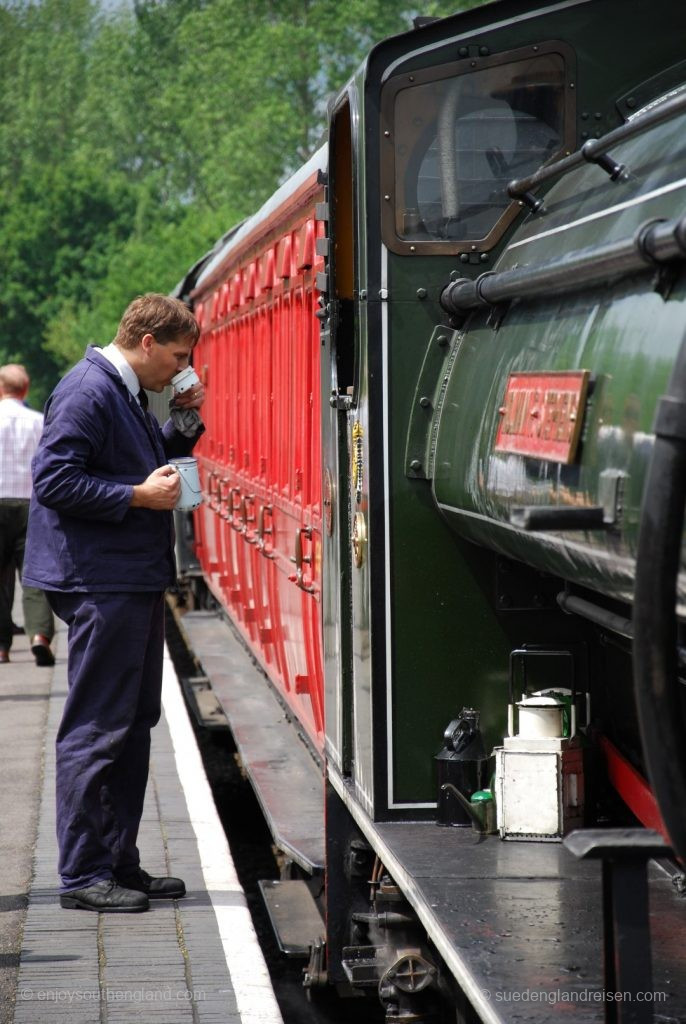
Kent & East Sussex Railway – a well deserved break!
Let’s get back to the Kent & East Sussex Railway. This is fortunate that due to the low traffic significance of the line when it was active, fundamental renovation work has largely been omitted. This means that large parts of the line are in the same state as when it opened more than a hundred years ago! With great attention to detail, this line was restored mainly by volunteers with all the original details such as railway gates (instead of barrier systems), signal boxes and railway stations as well as all the locomotives and carriages.
That’s enough of the introduction: Let’s travel together on the 10:45 a.m. steam train from Tenterden to Bodiam. Today there are a total of five pairs of trains, two of which are driven by a diesel double railcar from 1958 and three are classic steam trains.
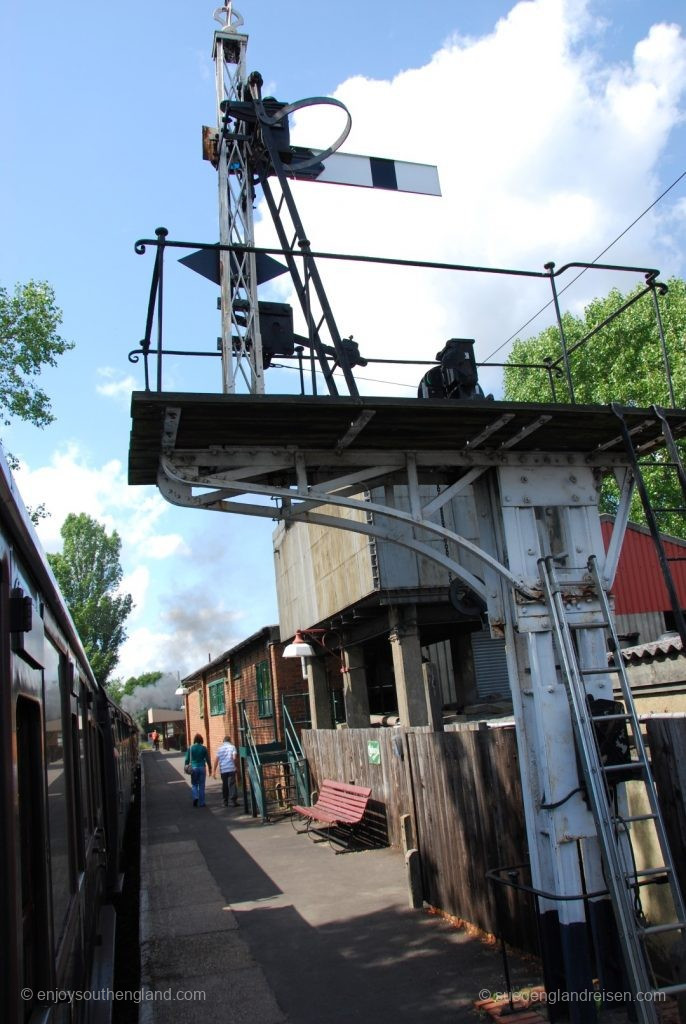
Kent & East Sussex Railway – signaling device
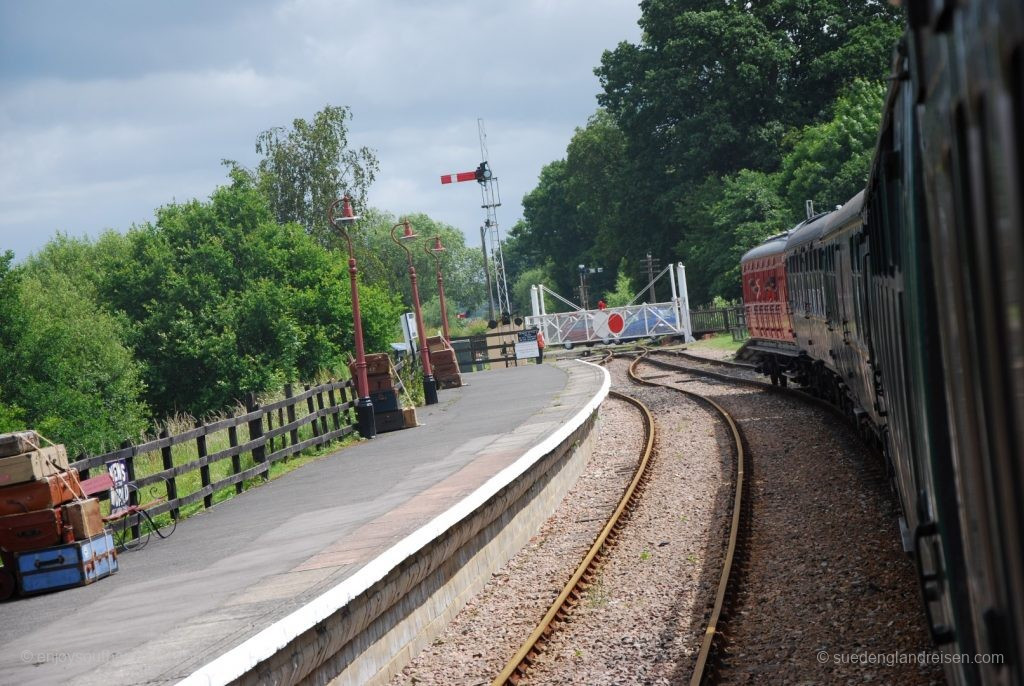
Kent & East Sussex Railway – a stop en route
The station of Tenterden is worth a visit even without a ride. Typically British, the visitor receives a lush flower splendour. In addition to the house platform, historic Pullmann wagons, including several dining cars, are parked on two other tracks. These are brought on the track if necessary, especially with the dining car, first-class dinner rides take place regularly. It should be noted that British food – at least southern English – has made an incredible leap in quality in recent years and today does not even have to hide from high-quality continental European cuisine!
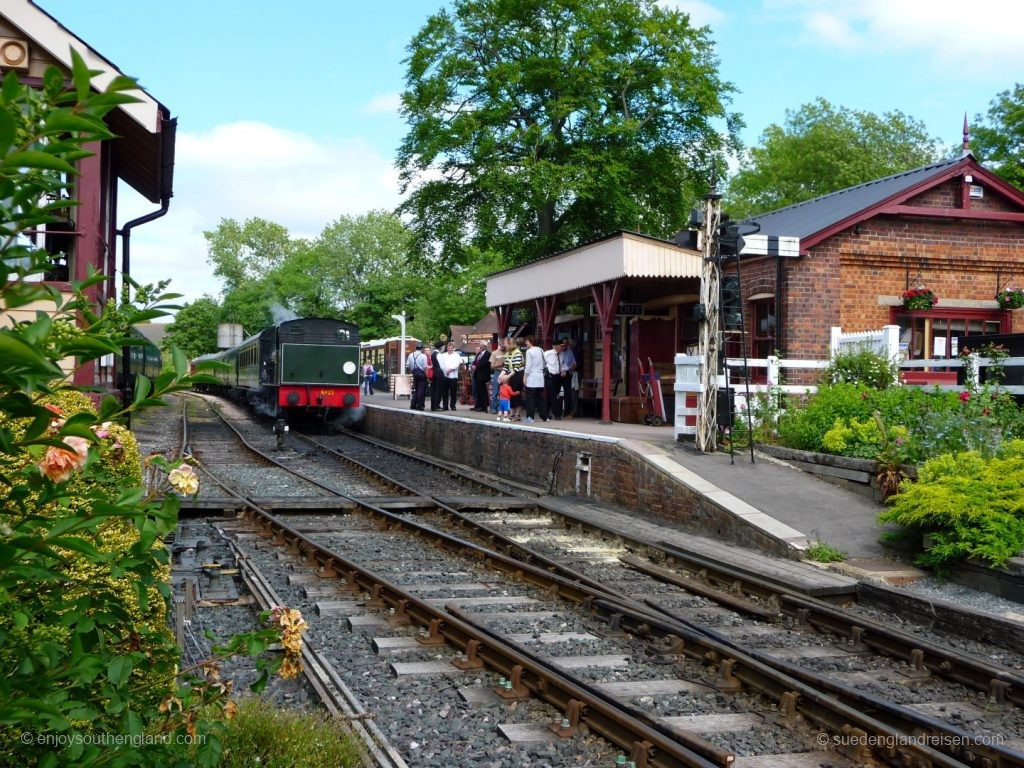
Kent & East Sussex Railway – in Tenterden station
At the platform, the provided train is already waiting with five four-axle passenger cars from the 1930s and 1950s, three of which are reserved for tour groups. Locomotive No. 23, a C-coupler from 1952, now serves as a driving horse. In contrast to the customs of other countries, the carriages are still blocked – only a few minutes before departure the doors are opened. The third class, which dominates the car, also has lavishly upholstered armchairs and more than sufficient foot space. The passenger should not be too extensive: four seats per bench is offered by a compartment – in the first class, on the other hand, there are only two seats next to each other. If you prefer this, you can experience a first-class driving experience against the small surcharge of only one pound per trip (payable directly at the conductor).
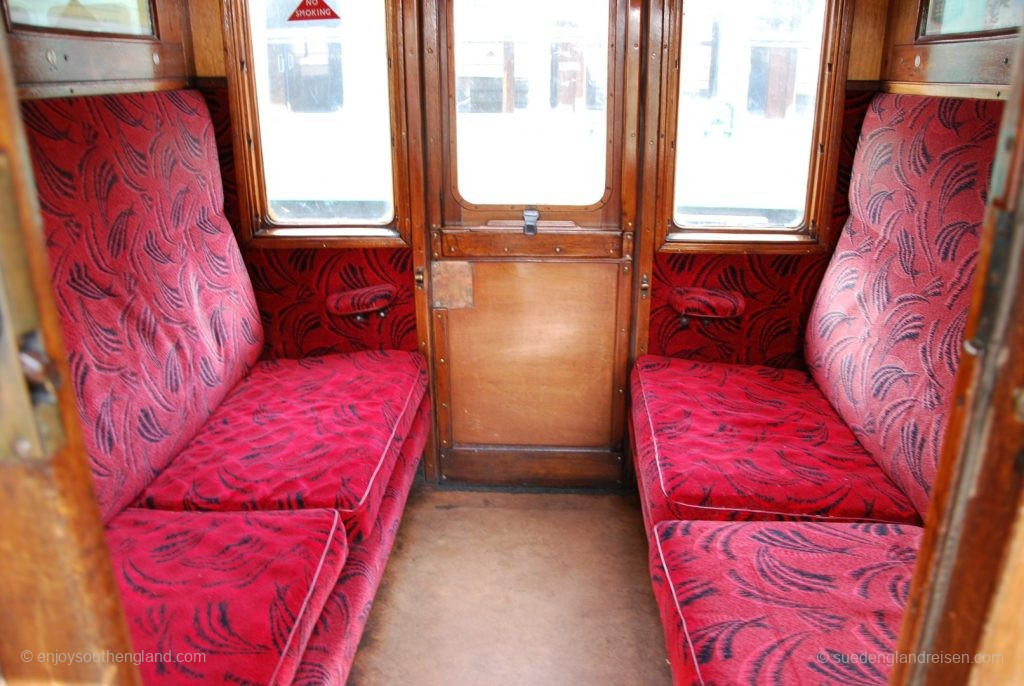
Kent & East Sussex Railway – in the carriage
The timetable here at the “K&ESR” is not so strongly adhered to. They are happy to wait for some delayed passengers, who are directed personally to a free compartment by the station manager. Then
things start to get serious. The level crossing, which is directly at the station exit, is manually closed. However, there is no barrier system for this, but two large gates are moved by hand. These block the railway and only after manual activity of both gates do they close the road. A large sign on the gate warns motorists, supported at night by a small lantern mounted on the gate wing.
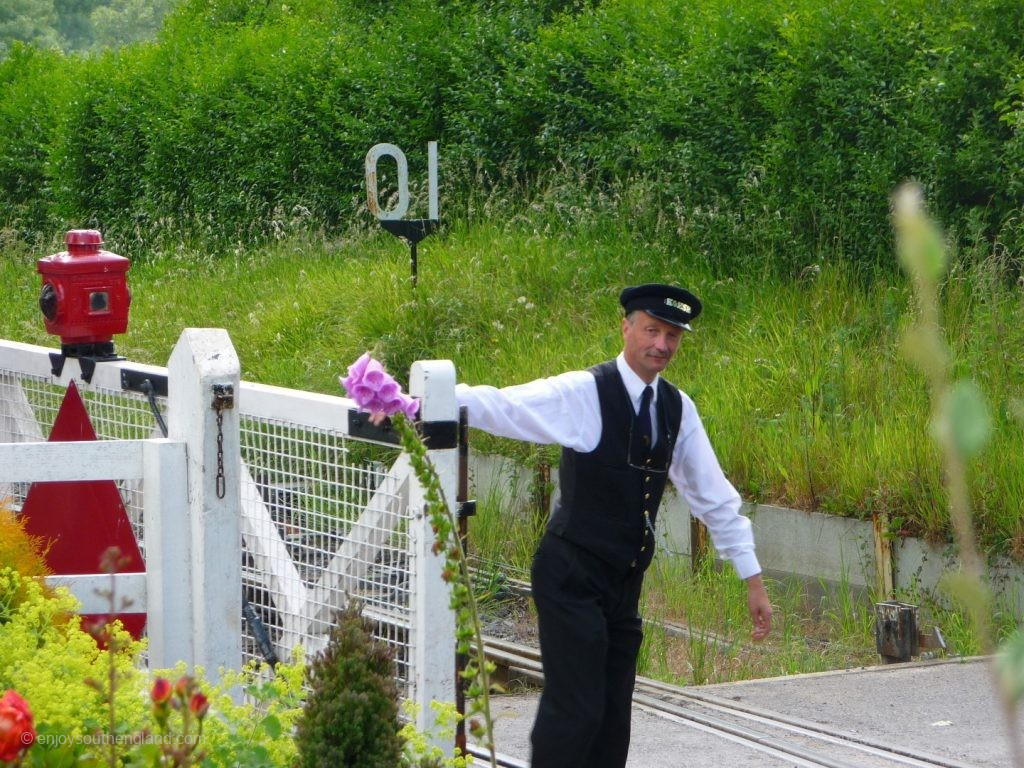
Kent & East Sussex Railway – closing the gates at the nearby road
The line is now clear for our train to depart. Activity increases at the signal box adjacent to the level crossing. The departure order is given and the 50-minute journey begins. The train picks up speed slowly and disappears from sight for the remaining visitors on the platform into a slightly rising curve in the forest
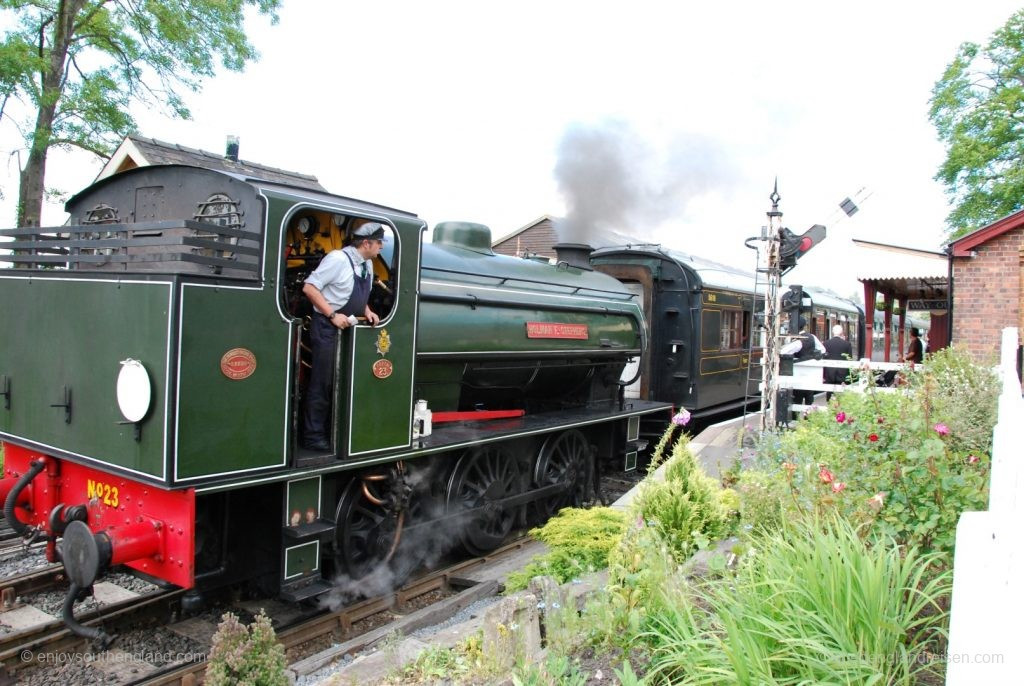
Kent & East Sussex Railway
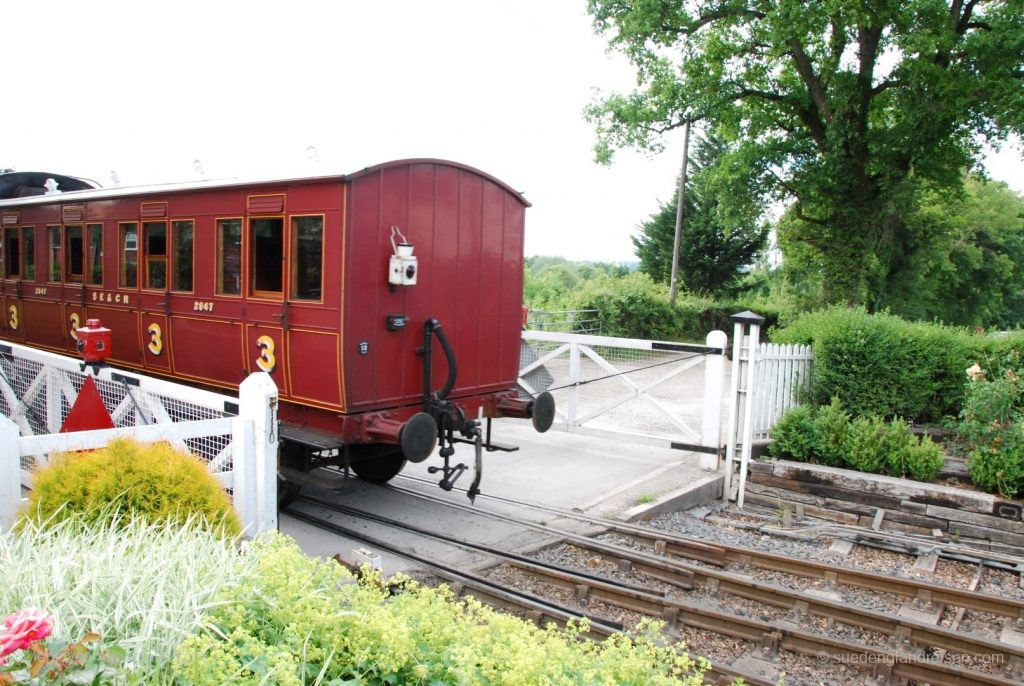
Kent & East Sussex Railway – after leaving Tenterdon station
The train moves along on bolted rails and the noise frightens herds of cattle and sheep until we reach Rolvenden station after passing over two railway crossings. The locomotive workshop is housed here and has a small viewing platform for any visitors who are interested in this. The train continues past hop kilns which are typical for this area. It then follows the narrow watercourse “Newmill Channel” to Wittersham Road. Our train will have to cope with a sharp incline on the return journey and will have to work hard. However, downhill is a lot easier and there is no stop at Wittersham Road today. The street that gives the station its name, even has its own gatekeeper’s house.
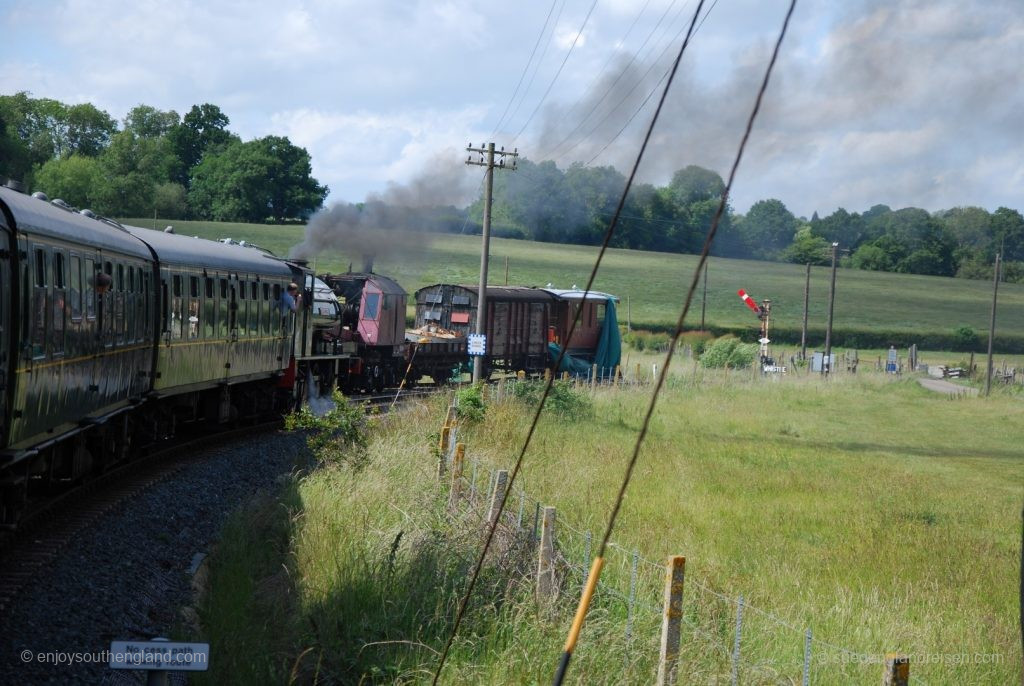
Kent & East Sussex Railway – passing a construction train
We cross the very narrow river Rother on one of the few engineered structures and approach Northiam. Before entering the station, the train has to stop. This is because the train driver has to descend, walk towards the railway gate to open or close it at the road and only then can the train continue. In Northiam there is a stop of about eight minutes, as the locomotive has to take water. This is time enough for a glimpse across the platform with the picturesquely draped stacks of old suitcases and nostalgic British army recruitment posters. From here, the last part of our tour along the slope of the valley runs almost in a straight line to the teminus at Bodiam. The castle ruins of the same name come into view very early on and offer the photographer a beautiful photo opportunity in the direction of travel on the right. We then arrive at our destination Bodiam, where a large number of passengers are already waiting for the journey back towards Tenterden.
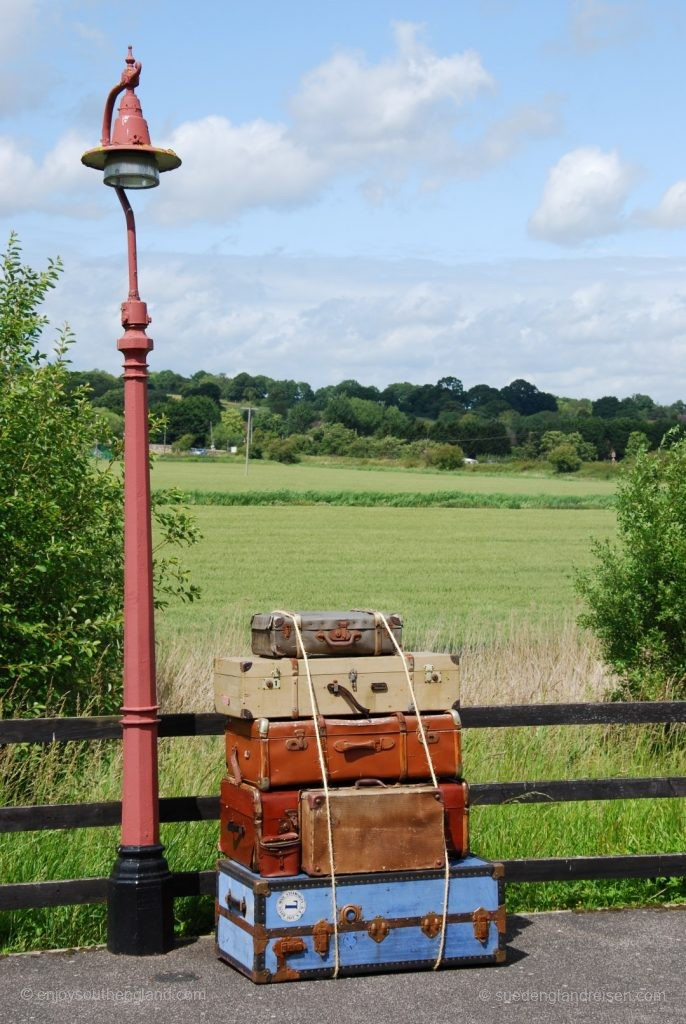
Kent & East Sussex Railway – Details at the station
The disembarking passengers now have a great opportunity to watch the locomotive moving with two lots of opening and closing of the railway gates. Afterwards it is worth a visit to “Bodiam Castle” with its nice “Tea Garden” and then take the return trip on the next train which is powered again by steam locomotive No. 23.
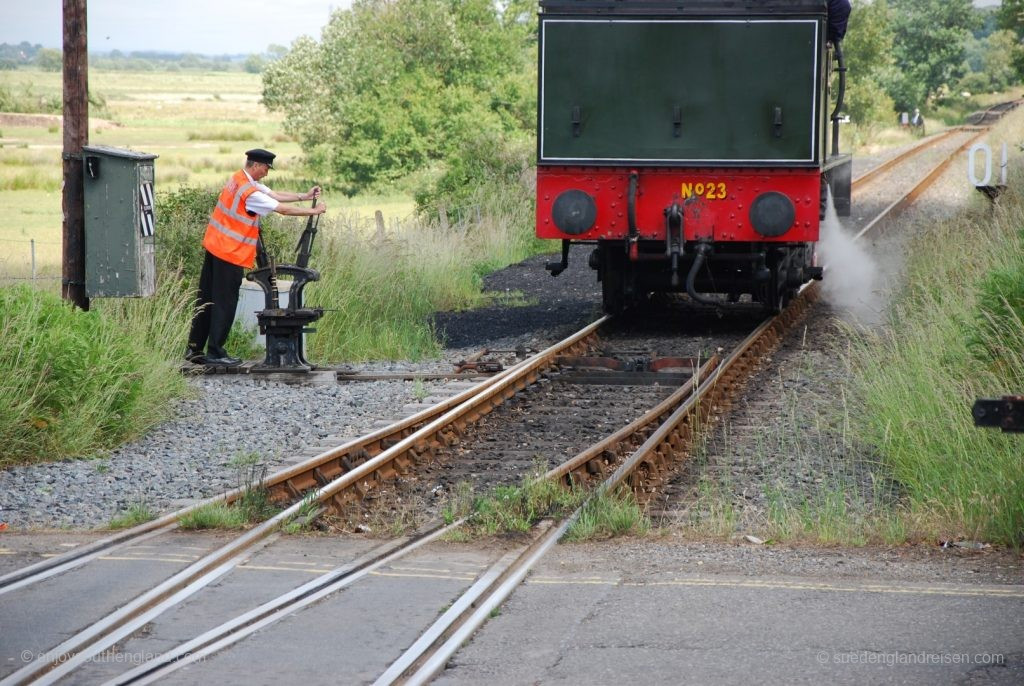
Kent & East Sussex Railway – Moving the locomotive in Bodiam
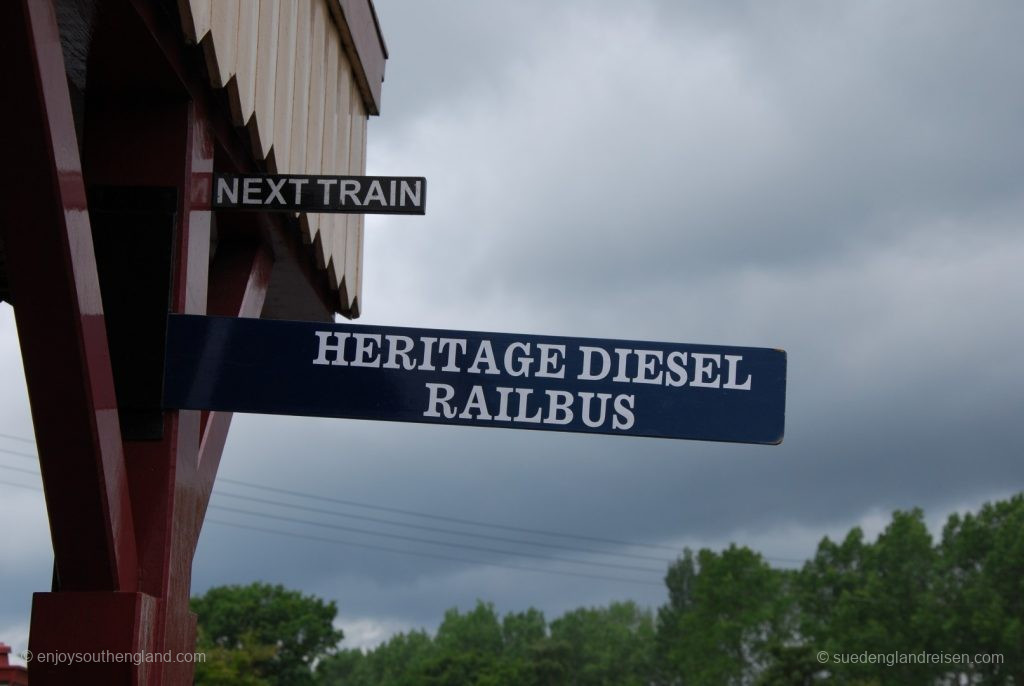
Kent & East Sussex Railway – Steam & Diesel
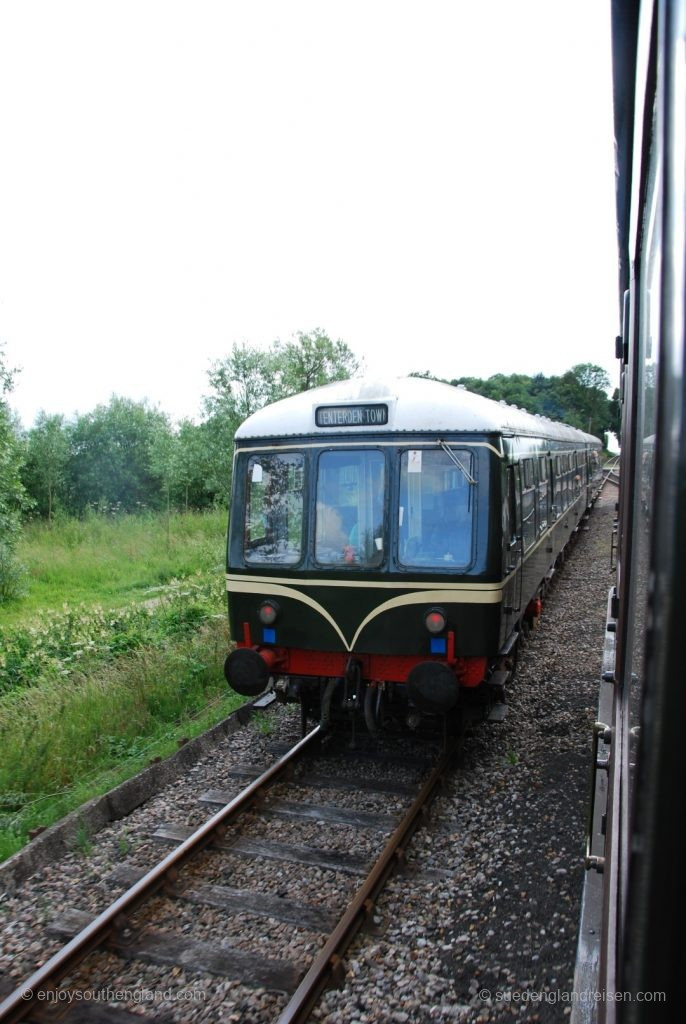
Kent & East Sussex Railway – the Stram Train passes a DMU
Perhaps another project will be a success in the next few years. This is the three-mile extension from Bodiam to Robertsbridge, where there will be a connection to the main line to and from London. However, this project is operated by another organisation, the Rother Valley Railway. Let’s stay excited! Speaking of this organisation, K&ESR is always looking for volunteers and offers training as a “Crossing Keeper” (i.e., the barrier keeper, possible from the age of 16) up to the train driver or signal box worker. Volunteers are actively approached by means of high-quality and appealing brochures. It is striking, however, that the age of the staff, at least those active during the week, is naturally more senior. This involves someone with enormous commitment to the subject and who likes to transfer this enthusiasm to the interested visitors during a friendly chat. Detailed information about this railway can be found here.
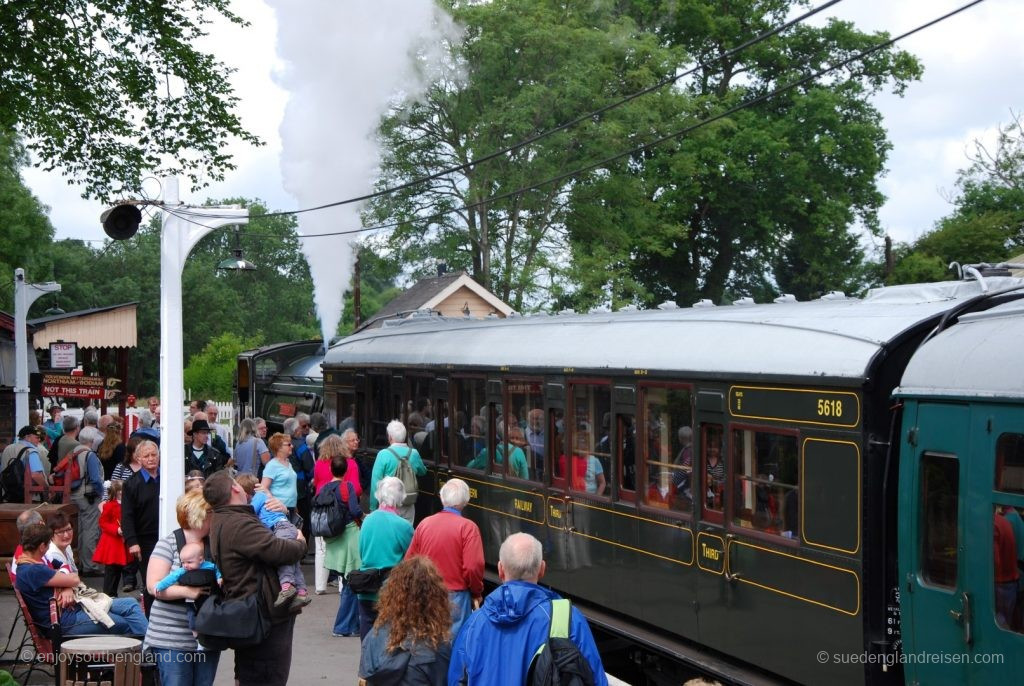
Kent & East Sussex Railway – great demand for a trip
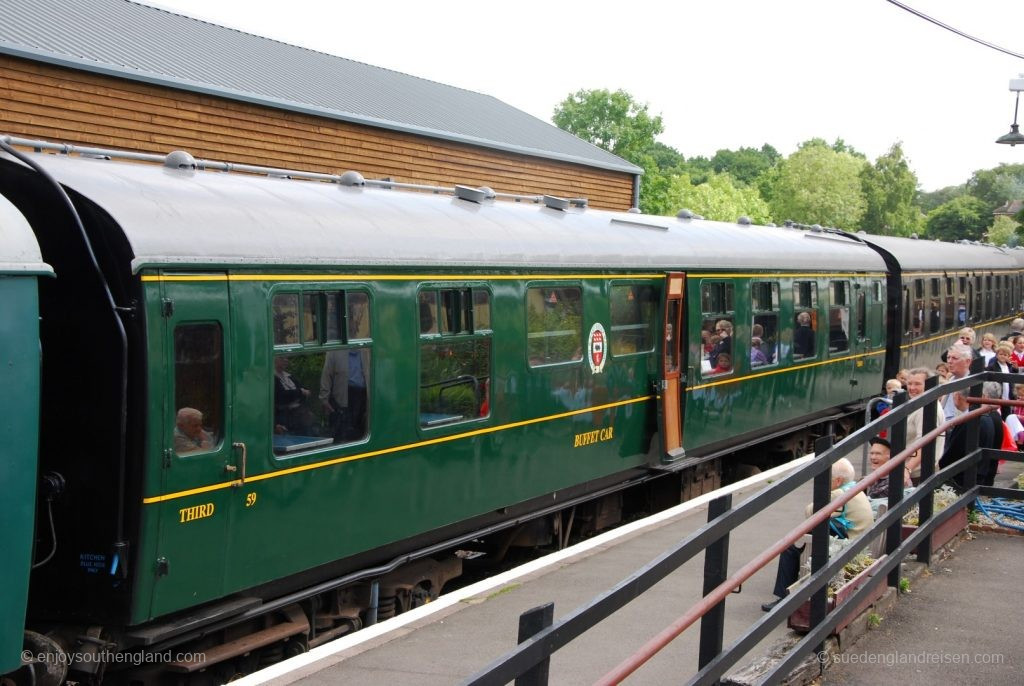
Kent & East Sussex Railway – close to leaving the station
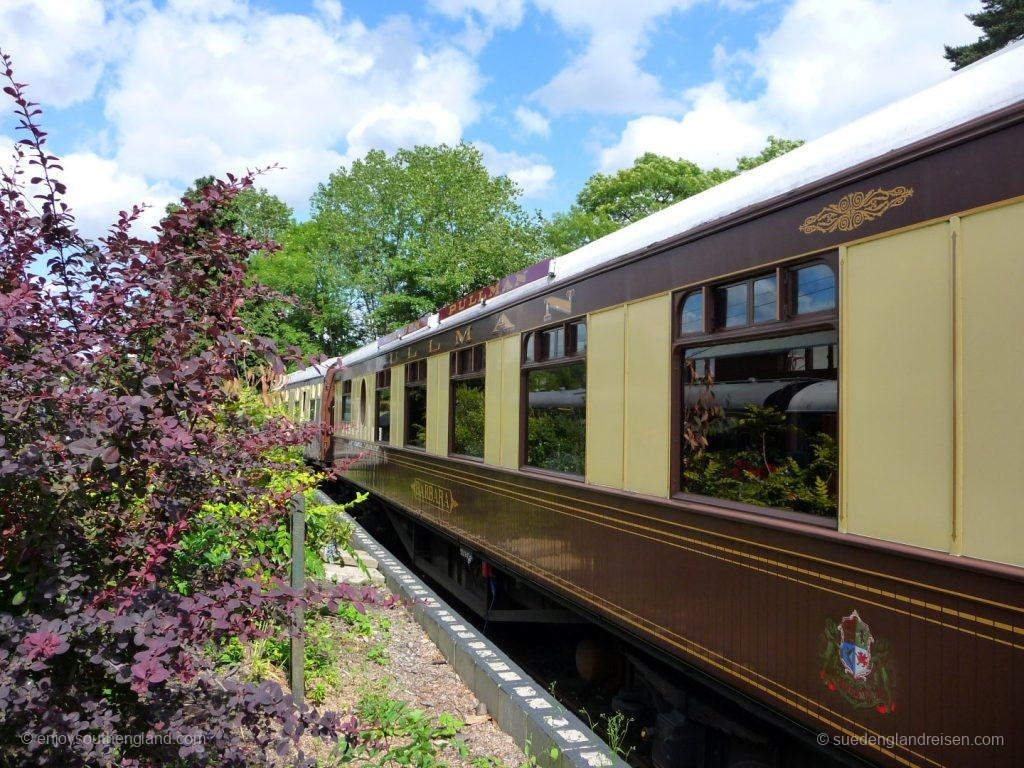
Kent & East Sussex Railway – Carriages
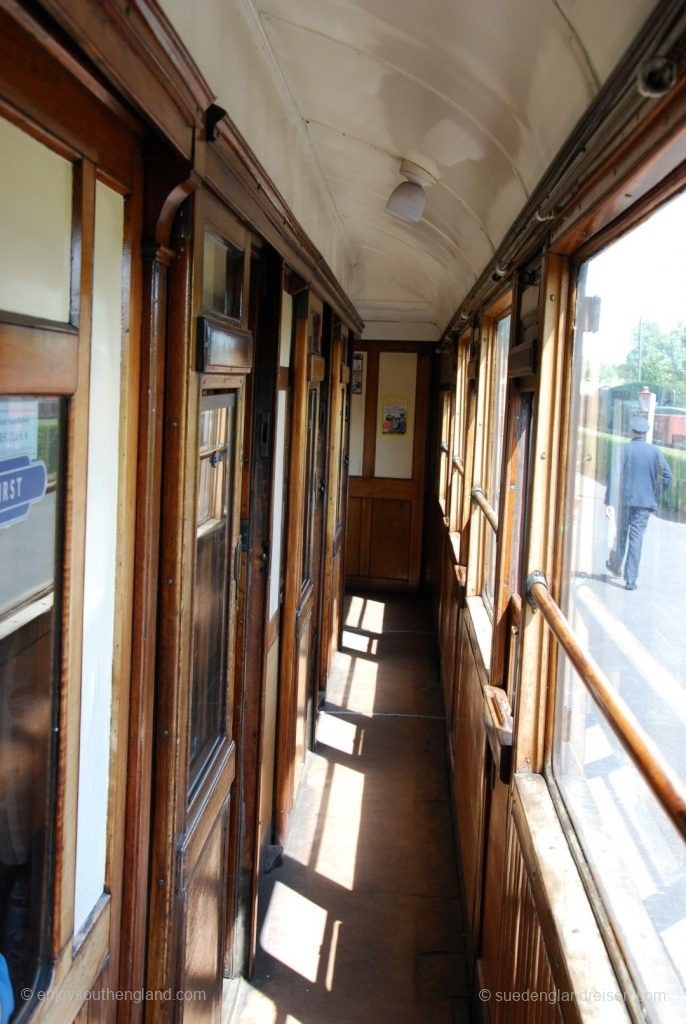
Kent & East Sussex Railway – in the carriage
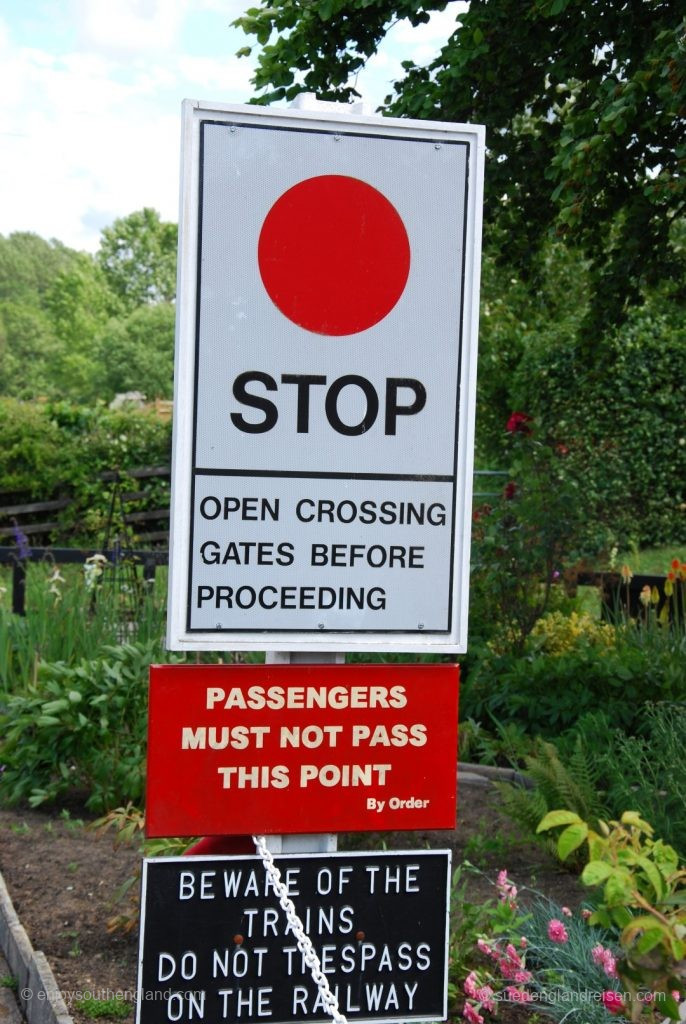
Kent & East Sussex Railway – Warning sign for the train driver






